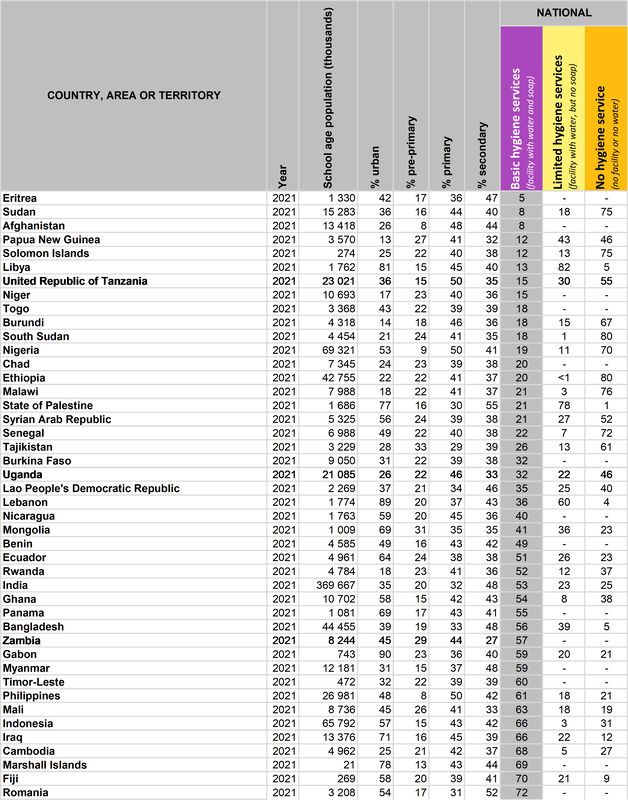
|
Basic hygiene services in schools depends on clean water being available for handwashing. AWGs could be designed specifically for this application. Table 5 below shows the national statistics. The world file tables available at https://washdata.org/data/downloads also show urban and rural statistics so quite detailed market analyses are possible.  Table 5: Forty-four countries, areas, or territories have school basic hygiene services less than 75% of the school age population. This data is for 121 out of 180 countries in the database. For 59 countries there is no data for school basic hygiene services. The blog author condensed and sorted the data according to lowest to highest national proportion of basic hygiene services. Data source: Progress on household drinking water, sanitation and hygiene 2000-2020: five years into the SDGs. Geneva: World Health Organization (WHO) and the United Nations Children’s Fund (UNICEF), 2021. Licence: CC BY-NC-SA 3.0 IGO. Data gaps are indicated by a dash (-).
0 Comments
It is often said that children are our future. This truism may explain the special interest shown by WHO and UNICEF in compiling statistics about school drinking water services (Table 4, below) and school basic hygiene (Table 5, to be posted later in Part 5 of 7). There is commercial potential for AWGs designed for use in schools in drinking water and handwashing applications. Drinking water AWGs for schools and AWGs for handwashing by students are market segments rarely mentioned by academic researchers developing AWGs and by businesses offering AWG products. Welcome exceptions are the atmospheric drinking water fountain products by Hydrosphair and Skywell. The tables show the enormous potential for appropriately designed AWGs. These tables show the national statistics. The world file tables available at https://washdata.org/data/downloads also show urban and rural statistics so quite detailed market analyses can be done. Countries, areas, or territories with school drinking water services less than 75% of school age population are listed here in Table 4.  Table 4: Forty-four countries, areas, or territories have school basic water services less than 75% of the school age population. This data is for 133 out of 180 countries in the database. For 47 countries there is no data for school basic water services. The blog author condensed and sorted the data according to lowest to highest national proportion of basic water services. Data source: Progress on household drinking water, sanitation and hygiene 2000-2020: five years into the SDGs. Geneva: World Health Organization (WHO) and the United Nations Children’s Fund (UNICEF), 2021. Licence: CC BY-NC-SA 3.0 IGO. Data gaps are indicated by a dash (-). |
Roland Wahlgren
I have been researching and developing drinking-water-from-air technologies since 1984. As a physical geographer, I strive to contribute an accurate, scientific point-of-view to the field. Archives
May 2024
Categories
All
|

